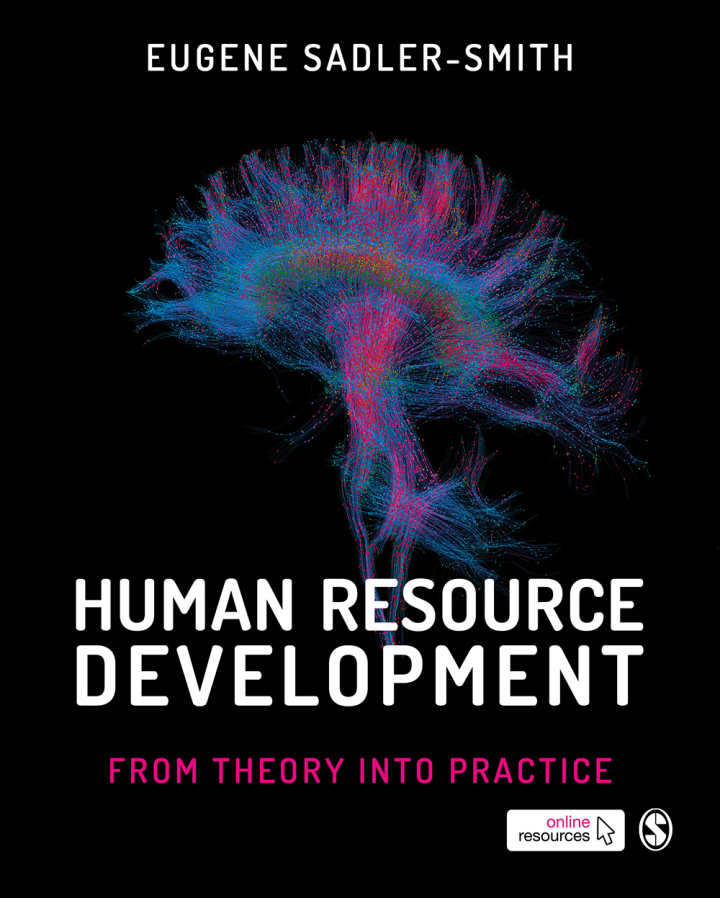
Human Resource Development 1st Edition - From Theory into Practice
PUBLISHER: Sage
Trường ĐH, Nhóm, Thư Viện: Gọi 0915920514 để báo giá eBook hosting trên Vital Source hoặc mua Sách In
Phát triển nguồn nhân lựcTừ lý thuyết đến thực hànhKết hợp tính chặt chẽ về mặt lý thuyết, tính phù hợp thực tiễn và đổi mới phương pháp sư phạm, Phát triển nguồn nhân lực: Từ lý thuyết đến thực tiễn là nguồn tài liệu thiết yếu cho sinh viên hướng tới sự nghiệp phát triển nguồn nhân lực (HRD), quản lý nguồn nhân lực (HRM), tâm lý nghề nghiệp và tổ chức, và các lĩnh vực liên quan. lĩnh vực quản lý và tổ chức kinh doanh. Các tính năng chính: • Phù hợp với Tiêu chuẩn Chuyên môn CIPD và Chứng chỉ Cấp 7 về Học tập và Phát triển của CIPD. • Bao gồm tất cả những kiến thức cơ bản về lý thuyết và thực hành HRD, cũng như các chủ đề tiên tiến như học tập trực tuyến, 'học tập kết hợp', khoa học thần kinh và học tập, 'hệ sinh thái học tập' và khoa học 'tổ chức học tập mới' của việc học. • Tuân theo một khuôn khổ độc đáo dựa trên sự khác biệt giữa 'micro-HRD', phóng to các chi tiết nhỏ, trung bình và 'macro-HRD', phóng to để nhìn vào bức tranh lớn hơn. • Bao gồm nhiều hiểu biết sâu sắc về nghiên cứu, nghiên cứu trường hợp và ví dụ từ nhiều bối cảnh khác nhau. • Cung cấp nhiều tính năng học tập khác nhau, bao gồm 'quan điểm từ thực tiễn' và 'theo cách nói của chính họ', giúp thu hẹp khoảng cách giữa lý thuyết và ứng dụng thực tế. Cuốn sách giáo khoa cập nhật và có thẩm quyền này đi kèm với sổ tay hướng dẫn toàn diện dành cho người hướng dẫn và các trang trình bày PowerPoint để hỗ trợ giảng viên trong quá trình giảng dạy của họ.
About the authorPrefaceIntroductionStructure and contentPedagogical and support featuresOnline resourcesPart I Micro-HRD1 Setting the scene for human resource development (HRD)Chapter check-inIntroductionGrowth and consolidation of HRDHRD’s identityTheory in HRDResearch philosophy and HRDEthics and purpose in HRDCritical HRDConclusion: Meanings and purposesChapter checkoutSkills development 1: Preparing for and getting a job in HRD2 Inside the ‘black box’Chapter check-inIntroductionLearningBehaviourist theories of learningCognitive theories of learningMemory’s role in learningCognitive learning theory and HRDCognitive theory and motivationCriticisms of the cognitive approachConclusion: Meta-learningChapter checkoutSkills development 2: Using behaviourist and cognitive learning theory to enhance on-job training (OJT)3 Learning from and with othersChapter check-inIntroductionSocial learning theorySocial cognitive learning theorySocial learning theory and HRDSituated learning theoryLearning, legitimacy and participationSituated learning processesApprenticeshipsCriticisms of situated learningConclusion: Human natureChapter checkoutSkills development 3: Write a learning autobiography4 Experience-based modalities of learningChapter check-inIntroductionExperiential learning theoryELT and learning stylesCriticisms of experiential learning theoryAction learningAction learning in practiceAndragogyConclusion: Learning to thinkChapter checkoutSkills development 4: Analysing an experience of learning in the workplace5 ‘Neurolearning’ and HRDChapter check-inIntroductionNeuroscience and HRD: ‘Caveat emptor’Brain science basicsPlasticityNeurodiversity and learningEmotions and learningMindfulness and learningAgeing and learningConclusion: HRD at the ‘cutting edge’Chapter checkoutSkills development 5: Creating guidelines for brain-based HRD6 Formal and informal learningChapter check-inIntroductionFormal learning and employee trainingTransfer of learningSimulation trainingThe learning transfer environmentMaximizing the impact of trainingInformal and incidental learningProcesses of informal learningConclusion: Learning and workingChapter checkoutSkills development 6: Challenging tradition7 Maximizing employees’ potentialChapter check-inIntroductionCoaching and mentoringThe rise and practice of coachingMentoringCareer and talent developmentCareer development and HRDLeadershipLeadership frameworks and leader powerLeader and leadership developmentConclusion: Character, practical intelligence and wisdomChapter checkoutSkills development 7: Getting the recipe ‘right’ for leader and leadership developmentPart II Macro-HRD8 The bigger pictureChapter check-inIntroductionMegatrendsGlobalizationTechnologyDemographicsStakeholdersPower, politics and diversityEnvironmental sustainabilityTrust and HRDConclusion: Grand challengesChapter checkoutSkills development 8: Grand challenges and HRD’s response9 HRD as a strategic partnerChapter check-inIntroductionTheory and strategic HRD: Penrose’s and Barney’s contributionsDynamic capabilities and HRDStrategy and human resourcesStrategic human resource development (SHRD)Criticisms of strategic approachesConclusion: Strategic alignment and strategic partnershipChapter checkoutSkills development 9: ‘Just the job’?10 The HRD systemChapter check-inIntroductionIdentifying and analysing learning and development needsHRD function and its stakeholdersThe HRD system in smaller firmsHRD and organization developmentInternational HRDThe learning ‘ecosystem’Conclusion: Agile HRDChapter checkoutSkills development 10: Personal development planning11 Hybrid HRDChapter check-inIntroductionHistorical background of technology-based learningDigital learningBlended learningAdvantages and disadvantages of technology-based methods‘70:20:10’Criticisms of 70:20:10Conclusion: The means to an endChapter checkoutSkills development 11: Making the case for hybrid HRD in barista training12 Does HRD cost or pay?Chapter check-inIntroductionEvaluation definedPurposes of evaluating HRDKirkpatrick’s four-level frameworkReturn-on-investment (ROI, level 5) evaluationCriticisms of, and alternatives to, levels-of-outcome modelsConclusion: Whose ‘bottom line’?Chapter checkoutSkills development 12: Designing an evaluation13 The only sustainable source of competitive advantageChapter check-inIntroductionLearning and corporate longevityMental modelsAssimilation and accommodationThe upsides and downsides of mental modelsRoutinesA behavioural theory of organizational learningLevels of learningA cognitive theory of organizational learningConclusion: A ‘coming of age’?Chapter checkoutSkills development 13: Single- and double-loop learning in action14 Knowledge and the new learning organizationChapter check-inIntroductionOrganizational knowledgeTypes of knowledgeKnowledge creation and managementCriticisms of Nonaka’s SECI modelThe learning organizationSenge’s five disciplines of a learning organizationMarsick and Watkins’ dimensions of a learning organizationCriticisms of The Learning OrganizationConclusion: Now’s the time?Chapter checkoutSkills development 14: Gaining support for the ‘learning organization’ through the appointment of a chief learning officer (CLO)ReferencesIndex















